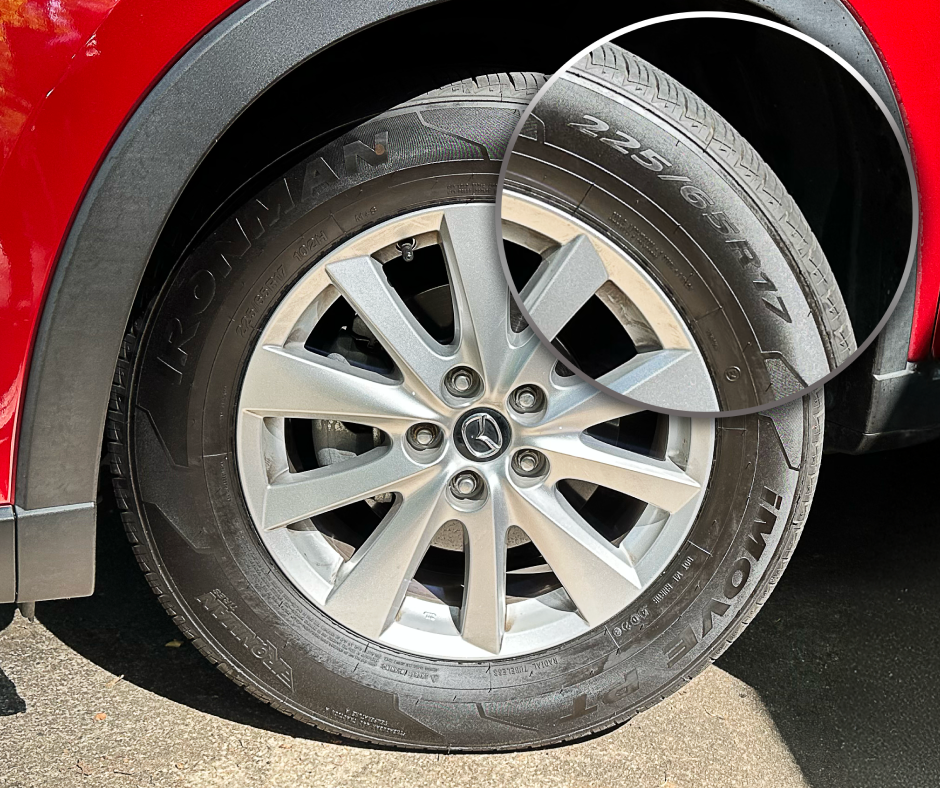One of the most crucial aspects of vehicle maintenance is ensuring you have the right tires for the season ahead. Before you can choose the right tires, you need to know your tire size.
This comprehensive guide will walk you through the process of finding your tire size and understanding tire fitment, so you can make an informed decision when it's time to buy.
How to Find Your Tire Size

Finding your tire size is easier than you might think. There are several ways to locate this information:
- Check Your Sidewall: The most direct method is to look at the sidewall of your current tires. You'll see a series of numbers and letters that represent your tire size.
- Safety Compliance Certification Label: Many vehicles have a placard inside the driver's side door jamb or on the inside of the fuel door. This placard lists the recommended tire size for your vehicle.
- Owner's Manual: Your vehicle's owner's manual will also provide information about the correct tire size for your make and model.
How to Read Tire Size
Understanding how to read tire size is crucial when comparing tire sizes or looking for replacements. Let's break down a typical tire size:
185/60R14 82H
- 185: The width of the tire in millimeters
- 60: The aspect ratio (height of the tire's cross-section to its width)
- R: Radial construction
- 14: The wheel diameter in inches
- 82: The load index
- H: The speed rating
Knowing how to interpret these numbers will help you compare tire sizes and ensure you're getting the right fit for your vehicle.
Understanding Tire Fitment
Tire fitment goes beyond just matching numbers. It's about ensuring the tire is compatible with your vehicle in terms of size, load capacity, and performance characteristics. Here are some key factors to consider:
- Diameter and Width: The new tires should have the same overall diameter as your original tires to maintain proper speedometer and odometer readings. The width should be appropriate for your wheel size.
- Load Capacity: Make sure the new tires can handle the weight of your vehicle. This is indicated by the load index number.
- Speed Rating: Choose tires with a speed rating that matches or exceeds your vehicle's capabilities.
- Driving Conditions: Consider the climate and road conditions you typically encounter. For example, if you live in an area with heavy rainfall, you might want to look into Ironman's all-season options like the iMOVE GEN 2 AS, which boasts an M+S rating for all-season performance.
Choosing the Right Tires
As we approach tire buying season, it's essential to plan for all weather conditions you expect to encounter as you drive throughout the year. Here are some options from Ironman Tires to consider based on your needs:
- For all-season sport utility performance, the iMOVE GEN 2 SUV offers an excellent balance of quality and aesthetics, with enhanced traction in various conditions.
- If you're looking for commercial tires for regional pick-up and delivery applications, the GEN 2 I-19A is an excellent choice and our best-seller. This all-position tire offers reduced downtime and improved fuel efficiency, making it perfect in a wide variety of applications for commercial vehicles.
- For those dealing with mixed on/off-road conditions, tires like the GEN 2 I-31M, iMOVE PT, and All Country M/T provide the traction and durability you need.
The right tire can make a significant difference in your vehicle's performance, safety, and fuel efficiency. Don't wait until the first snowfall or heavy rain to realize you need new tires. Start your search now to ensure you're prepared ahead of tire buying season.
Take Action: Find Your Perfect Tires

Now that you understand how to find your tire size and what to consider for proper fitment, it's time to take action. Here's what you can do:
- Check your current tire size using the methods described above.
- Consider your driving needs and the upcoming seasonal conditions.
- Research tire options that meet your requirements. Use the Search by Size tool on our homepage.
- Find a nearby Ironman Tire dealer to get expert advice and installation.
Don't let tire buying become a last-minute scramble. By starting your search now, you can take advantage of pre-season deals and ensure you have the perfect tires installed before the challenging weather hits.
Remember, the right tires are not just about size – they're about safety, performance, and peace of mind. Make sure you're ready for whatever the road ahead may bring by choosing the perfect Ironman Tires for your vehicle today. Find a dealer near you to get started.

Tire Sizing Guide: Finding the Perfect Fit for Your Vehicle
As the leaves change color and the temperature begins to drop, it's time to start thinking about preparing your vehicle for the challenging driving conditions that come with fall, winter, and early spring.